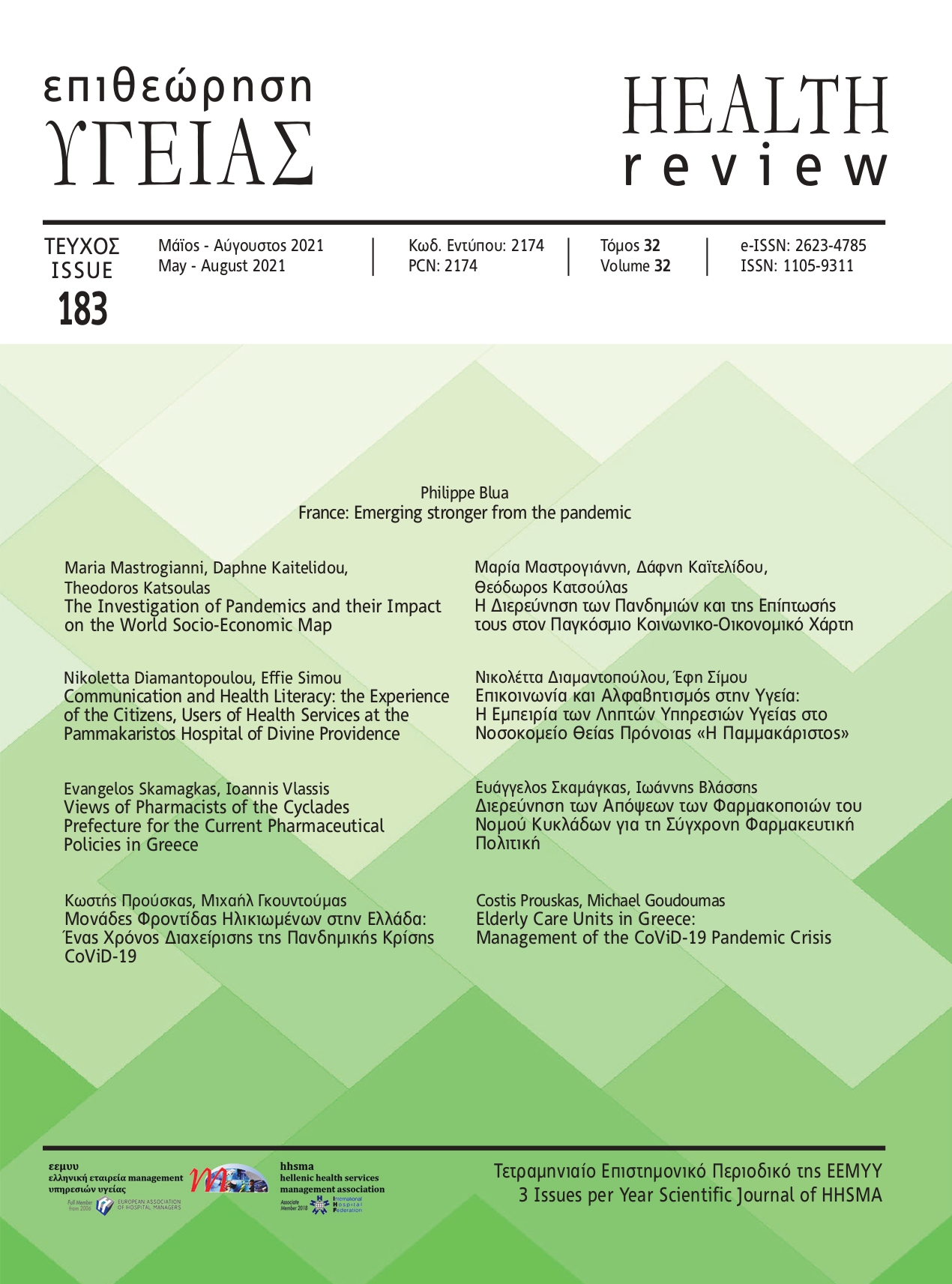Abstract
Introduction: One’s health literacy level is becoming an important determinant factor in the process of maintaining individual and public health, while affecting communication and satisfaction both from the doctor and the health system.
Purpose: To investigate the importance of both doctor communication and health literacy on the user of health services as far as the overall health management and satisfaction from public health services provided by the Pammakaristos Hospital of Divine Providence is concerned.
Methodology: For the needs of this study 220 patientsrecipients of this specific hospital’s health services were approached (convenience samples) during March to July 2019. By conducting personal interview, patients were asked to answer questions expressing their views on doctor patient communication and relationship and on health literacy. The internal reliability of this questionnaire was tested using Cronbach’s-a coefficient. The statistical program SPSS22.0 was used for this analysis.
Results: 76.4% of the participants declared that the doctor always/often dedicates the needed time during the visit, while 35.4% of the respondents stated that they avoid asking their doctor questions, because they think that he is in a hurry or does not have much time. 79.1% of the respondents answered that their doctor lets them talk always/often without interrupting. However, 44.6% of the doctors speak in medical terms and patients have difficulty in understanding them. In addition, 75% of the participants always/often read the instructions on the medicine box, while 36.4% do not understand them. 63.7% of the participants are unable to prevent possible complications from their disease.
Conclusion: Empowering citizens with communication and health literacy skills will lead to their active participation on deciding for disease prevention, health promotion and protection.
